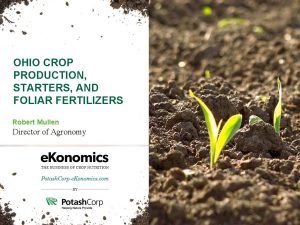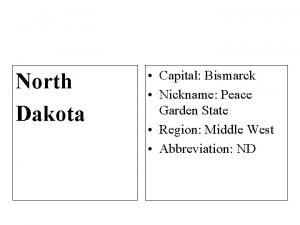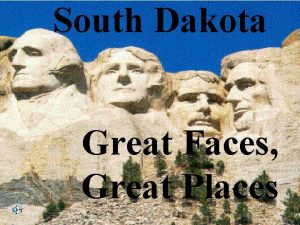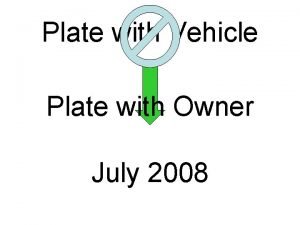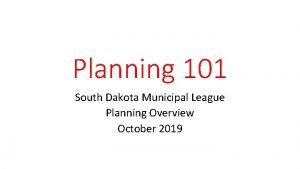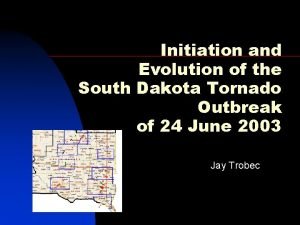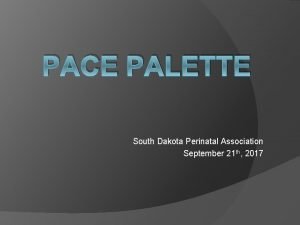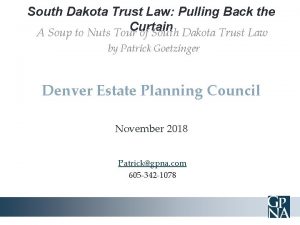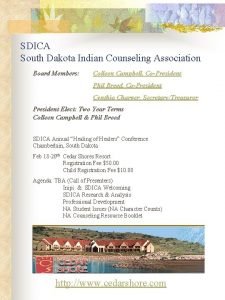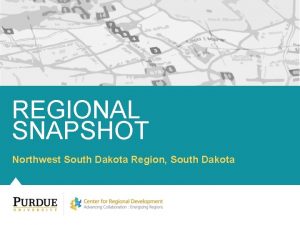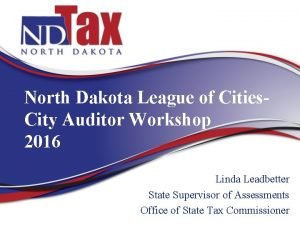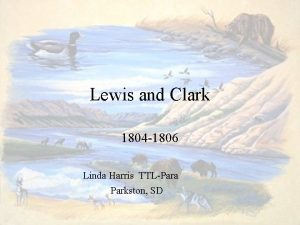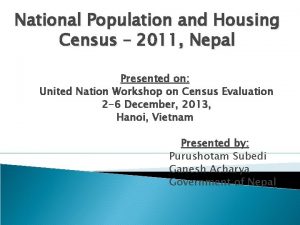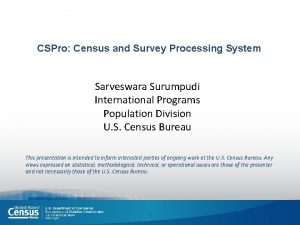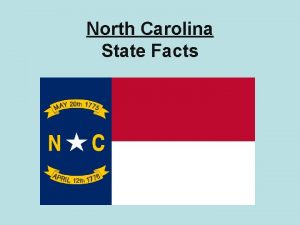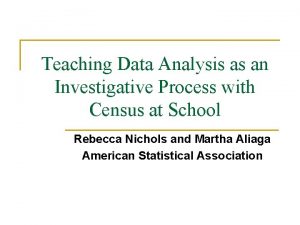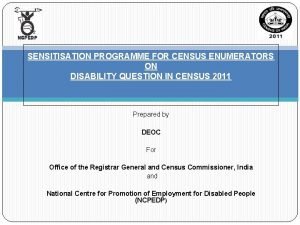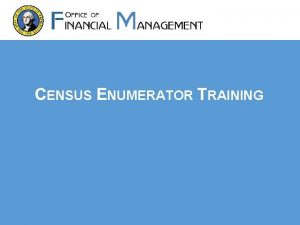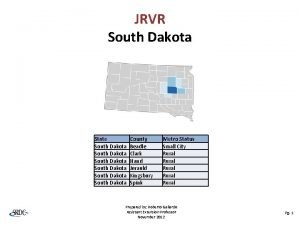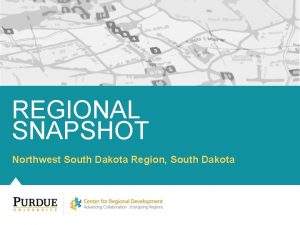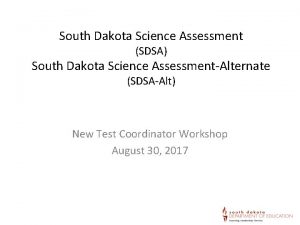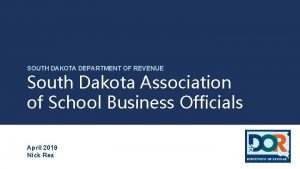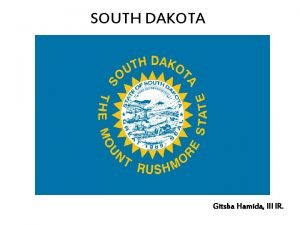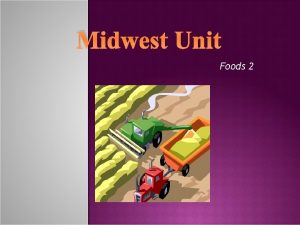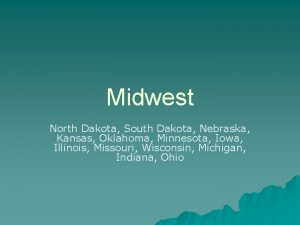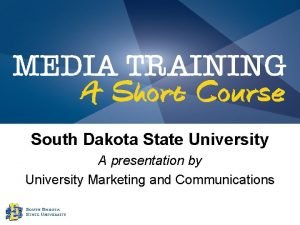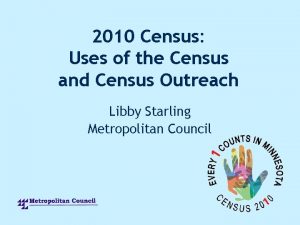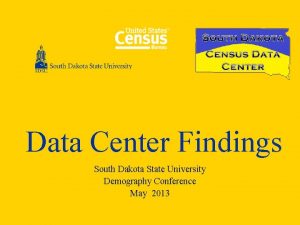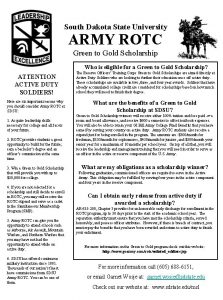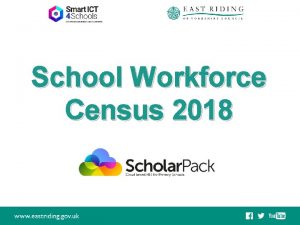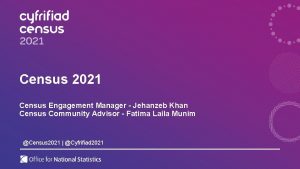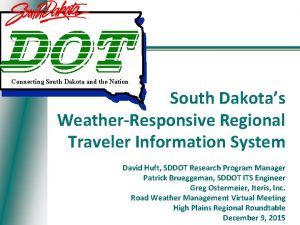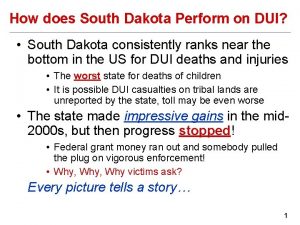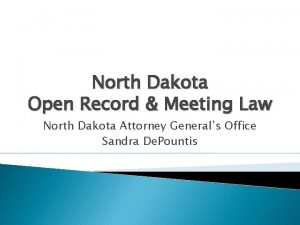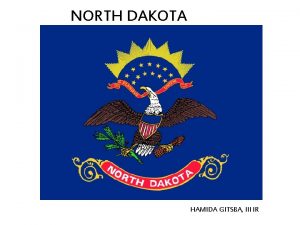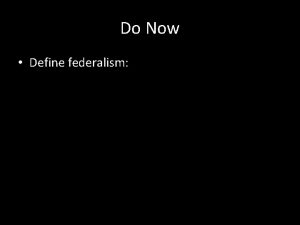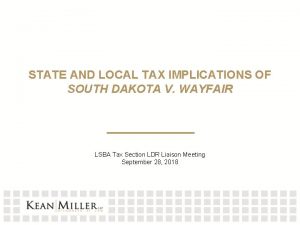South Dakota State University Rural Life and Census























- Slides: 23

South Dakota State University Rural Life and Census Data Center Eric Guthrie

We work to provide answers • We take questions form all parts of South Dakota and in relation to a great many topics. • We try to find answers from a variety of sources that most closely meet the needs and expectations of the questioner.

Some Data Sources • US Census Bureau o Decennial Census o American Community Survey (ACS) • Census of Agriculture • Bureau of Labor • South Dakota Department of Labor and Regulation • South Dakota Department of Health

Services • • • Assist with retrieving Data Help interpreting data and Census Releases Help with interpolation Help with extrapolation and projecting Help with asking questions we can answer with the data available.

Census research as the Art of the Possible Much of this comes down to how you are asking your question and how attached you are to specific definitions that may or may not be in the available data. Decennial Census Data is collected and available every 10 years. ACS Data is collected on an ongoing basis with geography and questions to follow the larger decennial census Other Data products have their own schedule

What does the collection cycle have to do with it? • Quite a bit actually o Every ten years the geographies get revamped, so what is available may change based on local circumstances • Incorporation or Disincorporation of a municipality • Merging of counties o Similarly the questions being asked get looked at on the same cycle • Race has been looked at in every census since 1790 due to our history with slavery and its relation to politics, but ethnicity, separate from nations of origin, wasn’t looked at until 1950 and has only been include din every census since 1970

The Data Products Change • The Census does and has long done more than just it Constitutionally mandated enumeration of the population. o The Census conducted a Census of Religion from 1906 -1936 (Public Law 94 -521 prohibits the Census form collecting this data now) o The Census of Agriculture is done every 5 yrs in years ending in 2 and 7 (New Census of Ag data is tentatively set for release in February 2014) • Non-Census data sets have their own unique cycles and collection practices particular to their purpose and

Ok, the data changes, so what? This can have an impact on how we can provide answers and how the answers may change over time. For example, if you needed to have a comparison of the change in time of the Hispanic population from 1930 to 1980, that is going to be a problem because the Census has not collected that data over the whole period.

More, So What? Some data points are simply not available, and in such cases we will work with you to get as close as possible. For example, say you need the number of people living in poverty in 2012 for Day and Minnehaha Counties. That this question has a couple of small problems, so how would we answer it?

Poverty, for example The question is now, “How many people lived in poverty in Day and Minnehaha Counties in 2012? ” What are the issues we have with this question? 1. The most recent data we have is for 2011 2. That would be coming out of the ACS and we could get very current data for Minnehaha but not for Day counties due to the data collection practices of the ACS. (There will be more on this topic later in the conference)

More on Poverty 3. The data that we can get for Day counties is from the 2011 ACS 5 -year estimates, so it would actually represent an average for the period 2007 -11. 4. We could get data specifically for 2011 for Minnehaha counties, but that may create issues with comparisons with the Day county data. That depends on what you are doing with it. 5. The margin of error for Day county may be quite large (More on MOE later).

So how would we answer that question? After consulting with the requester on their specific needs, we would most likely give the figures from the 5 -year estimates for Minnehaha and Day counties with cautions about the MOE and timeframe involved. That being said, the another issue that might creep in is if you need data at a specific poverty level that is not in the data. Anyone need poverty at 130% for a grant application?

How about a real question Recently a long-time citizen of South Dakota mailed in a question to the Data Center, and I was unlucky enough to be asked my Mike to answer it. I was cursing thanking Mike for weeks for this one. The Question: “What percentage of people between the ages of 18 and 65 make their living from farming compared to other workers in South Dakota, Moody County, and East River” Sounds easy, right?

The not so easy question This question came in the mail without a phone number or email address, so there wasn’t an opportunity to ask the questioner for any clarification, so I set about to answer it the best I could. Issues abound with this question. What are some of them? 1. What do you mean by earn their living? All of it? Most of it? Do you mean in terms of dollars earned, time worked, or how they consider themselves? 2. What about people who work on and off farm?

More Issues 3. Census of Ag data youngest age category is “less than 25”, so we cannot get to 18. 4. The Census does not tabulate data based on West or East River. 5. The most current Census of Ag is from 2007, what do we compare that to for total population? 6. Where do we get numbers of non-farm workers for comparison?

How did we answer it? We explained the intricacies of the data and made some interpolations. “In the end, given the data and the nature of your question, it would be difficult for someone to refute the statement that between 3 -6% of workers in South Dakota derive their income from tilling the soil. ”

Sources for that answer We used primarily the 2007 Census of Agriculture and the 2007 Business Patterns Survey

Another Question How do I define a state as either rural or not? First answer, “You don’t” Second answer, “Let’s think about that”

Rural or not? After discussion of the question we decided on a definition that was basically a ratio of the people that live in metro region of a state to non-metro regions. This conceptualization took the researcher in question quite a bit of time to tabulate because of the need to separate out counties in metro regions that cross state lines.

Is that Rural? The answer is no. That student was actually defining rural as basically the complement of Metro/Micro area, which is problematic, but it was sufficient for the student’s purposes. That still begs the question then, “What is rural? ” This is actually that, in one way or another we get asked often.

What is Rural? • Is it Metro/Micro vs. Non? o Or Metro vs. Micro vs. Non? • • • Is it population density? It is Beale codes? Is it Urban vs. Non Is the definition Ag dependent? Is the definition hidden somewhere in the 107 page report published by the USDA in their report: Report On The Definition Of “Rural” • Is it a space or a mindset?

What is Rural? Ultimately, it comes down to what you are trying to say and about whom you are trying to say it. If this part of your “Question”, or a large part of your concern with the data you use, give us a call and we will talk about you needs and figure out how to best meet those needs. Sorry, no resolution to the question…

Thank you We are her to help you with your data needs, let us know how we can help. Eric Guthrie South Dakota State University Rural Life and Census Data Center
 South dakota state university
South dakota state university Garden state nickname
Garden state nickname South dakota's state animal
South dakota's state animal Temporary license plate south dakota
Temporary license plate south dakota South dakota municipal league
South dakota municipal league Tornado
Tornado Embassy suites south dakota
Embassy suites south dakota South dakota perinatal association
South dakota perinatal association South dakota trust situs
South dakota trust situs Sdica
Sdica Northwest south dakota
Northwest south dakota Skills usa south dakota
Skills usa south dakota South dakota league of cities
South dakota league of cities Linda lewis south dakota
Linda lewis south dakota The idiocy of rural life
The idiocy of rural life Old south vs new south streetcar named desire
Old south vs new south streetcar named desire National population and housing census 2011
National population and housing census 2011 Cspro android
Cspro android Nc state bird
Nc state bird Quantitative variable examples
Quantitative variable examples Census disability question
Census disability question Caesar augustus issued a decree that a census
Caesar augustus issued a decree that a census Our census our future
Our census our future Census enumerator training
Census enumerator training
